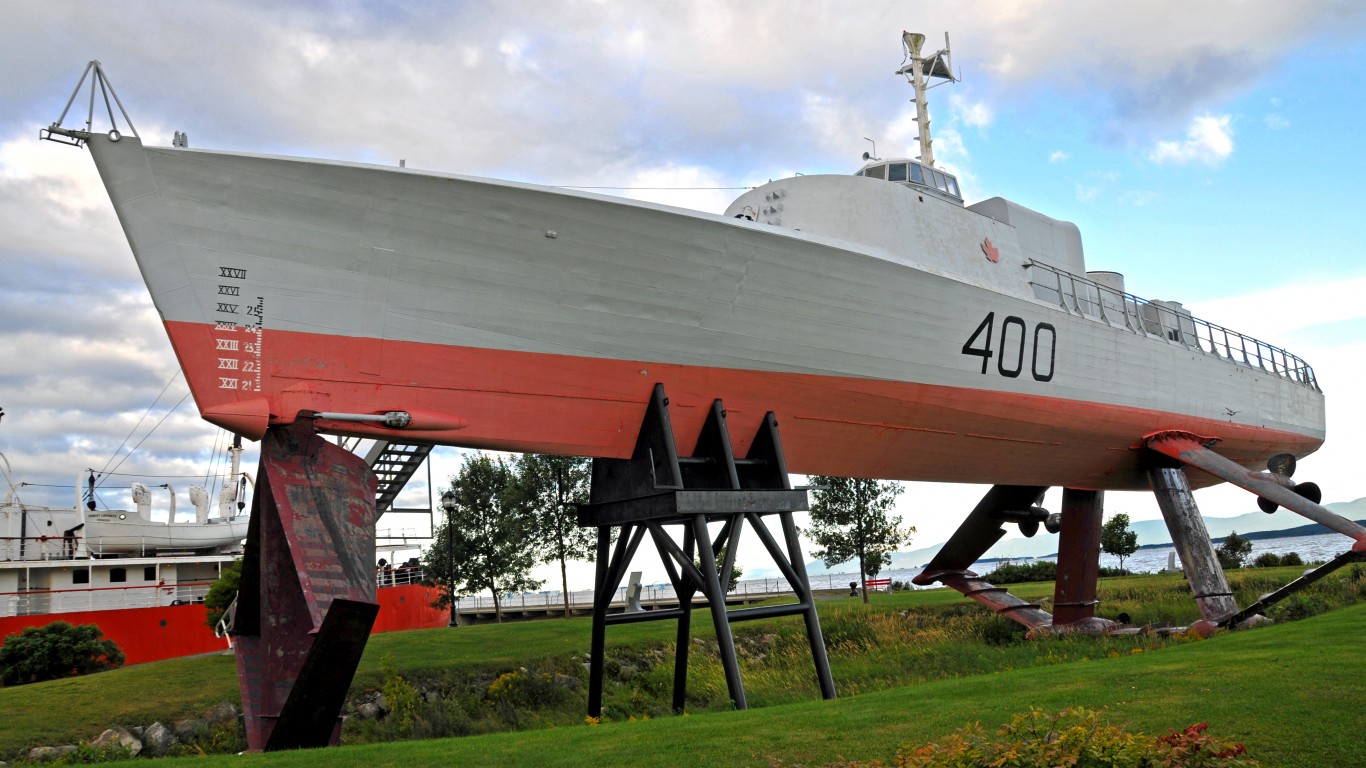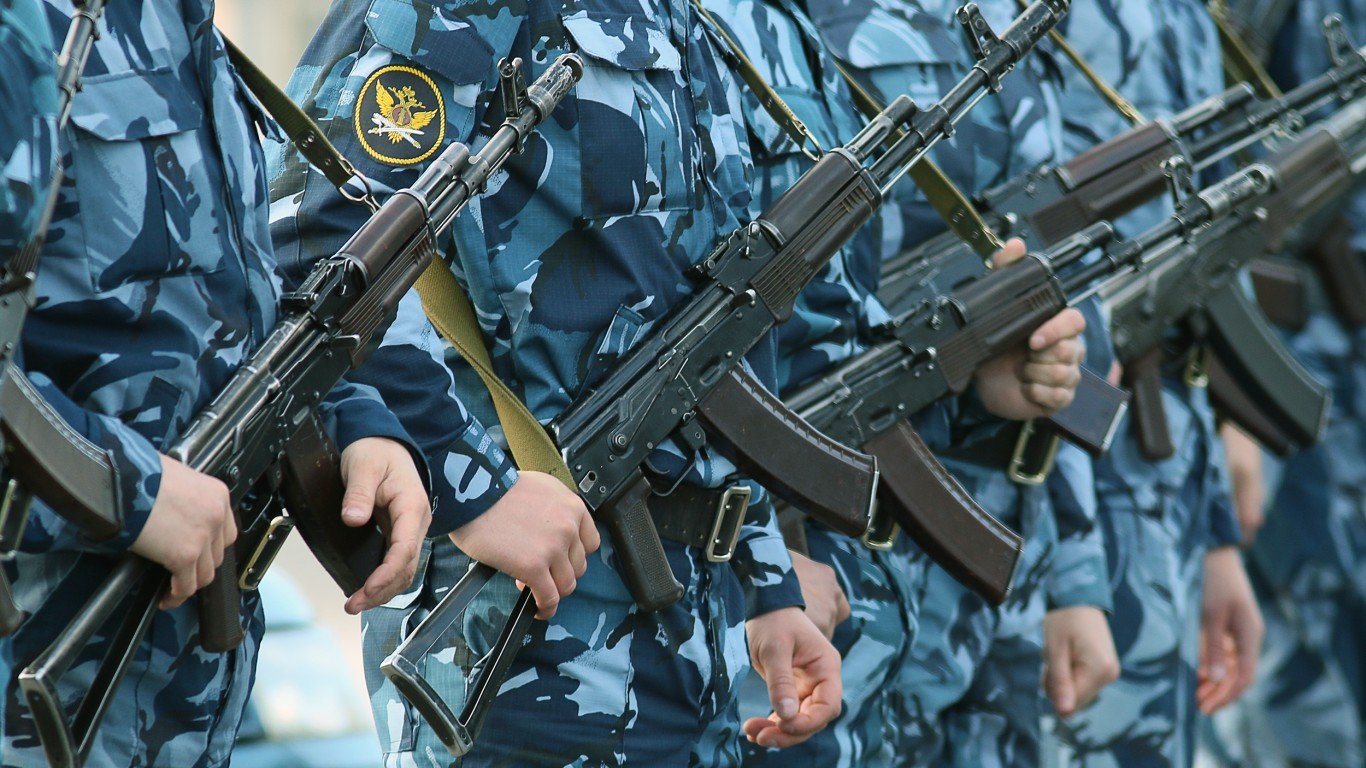

For centuries, shipbuilders have sought to produce the fastest vessels on the seas, capable of cutting through the water to explore new worlds, or to gain strategic advantage over other navies. There have also been races, such as the 170-year old America’s cup, which each year involves millions of dollars of investment as teams tried to leverage cutting edge technology to make their boats as fast as possible.
The fastest boat on record belongs to Australian racer Ken Warby, whose Spirit of Australia reached an astonishing 317.68 miles per hour in 1978. But the small, wooden, jet-powered hydroplane was designed for only one purpose: rocketing in a beeline across still water. (And this is the largest yacht in the world.)
By comparison, nearly all of the fastest boats for military or law enforcement purposes can reach top speeds of 52 to 74 mph — slowpokes compared to Wardy’s watery hot rod. Still, for vessels ladened with crew, armaments, ordnance, and equipment, the fastest warships move at formidable speeds in many of the harshest weather conditions.
To determine the fastest warships, 24/7 Wall St. reviewed a list from educational content outlet Owlcation. Owlcation converted knot speed to miles per hour, and vessels were ranked by their top speed.
From small and stealthy submarine hunters to wave-slicing interceptors, these boats (past and present) maximize their ability to move quickly while maintaining operational defensive and offensive capabilities. Some of these ships are enveloped with radar-absorbent material that greatly reduces their chances of showing up as a blip on an enemy’s radar screen. Others can lob missiles at water and coastal targets. A few are hydrofoils, whose hulls rise above the water as they gain speed. The fastest of them all is a Soviet-era plane-boat hybrid.
The largest of the fastest warships are U.S. Navy Littoral Combat Ships, or LCSs, that can cruise at nearly 51 miles per hour, impressive for a 400-foot-long ship weighing up to about 3,200 tons. Among the smallest of these fast military vessels is the 49 foot Interceptor DV15 RWS, which can reach a top speed of nearly 57 mph while defended by large machine guns. (Not the fastest, but this is the world’s largest warship.)
Here are the world’s fastest warships

10. USS Freedom
> Top speed: 52 mph
> Sustained speed: 50.84 mph
> Range: 4000 miles
> Status: Decommissioned
> Country: USA
The USS Freedom, or LCS-1, was the first Littoral Combat Ship of the U.S. Navy. The fast, agile missile-launching warship was decommissioned in 2021 after 13 years of service. These vessels are named after the littoral zone, the nearshore waters too shallow for larger warships.
[in-text-ad]

9. USS Independence
> Top speed: 52 mph
> Sustained speed: 50.84 mph
> Range: 4000 miles
> Status: Decommissioned
> Country: USA
Like its sister, the USS Freedom (LCS-1), the USS Independence (LCS-2) was set to be decommissioned in 2021 after 11 years of service. It’s part of a multi-billion-dollar plan to replace the U.S. Navy’s first four littoral combat ships with upgraded ones that will reportedly include hypersonic missile capabilities. Both ships are now in the naval reserve fleet.
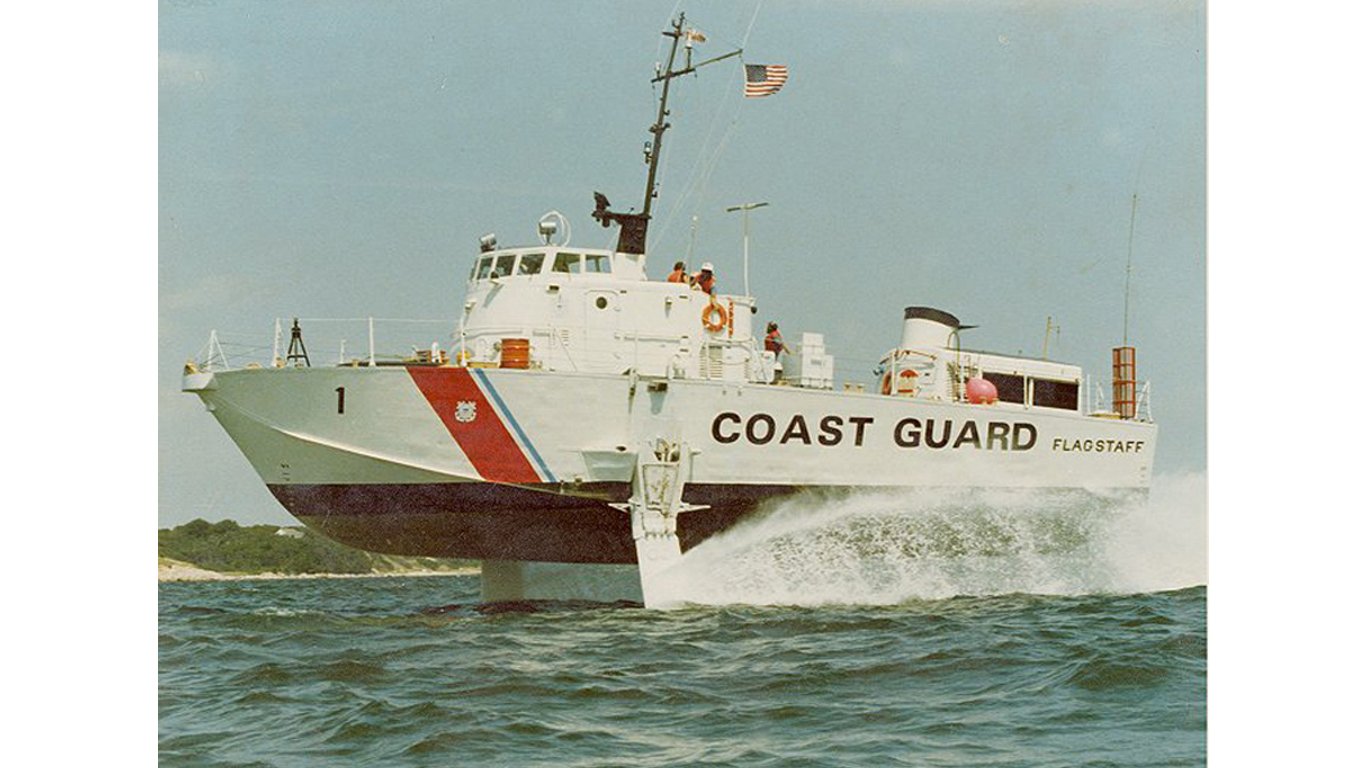
8. USS Flagstaff (PGH-1)
> Top speed: 56.93 mph
> Sustained speed: 54.65 mph
> Range:
> Status: Retired in 1978
> Country: USA
The USS Flagstaff is one of a series of small fast-attack patrol boats and of Pegasus-class U.S. Navy hydrofoils, ships whose hulls rise above the water’s surface as they gain speed and ride on winglike structures that greatly reduces the vessel’s drag.
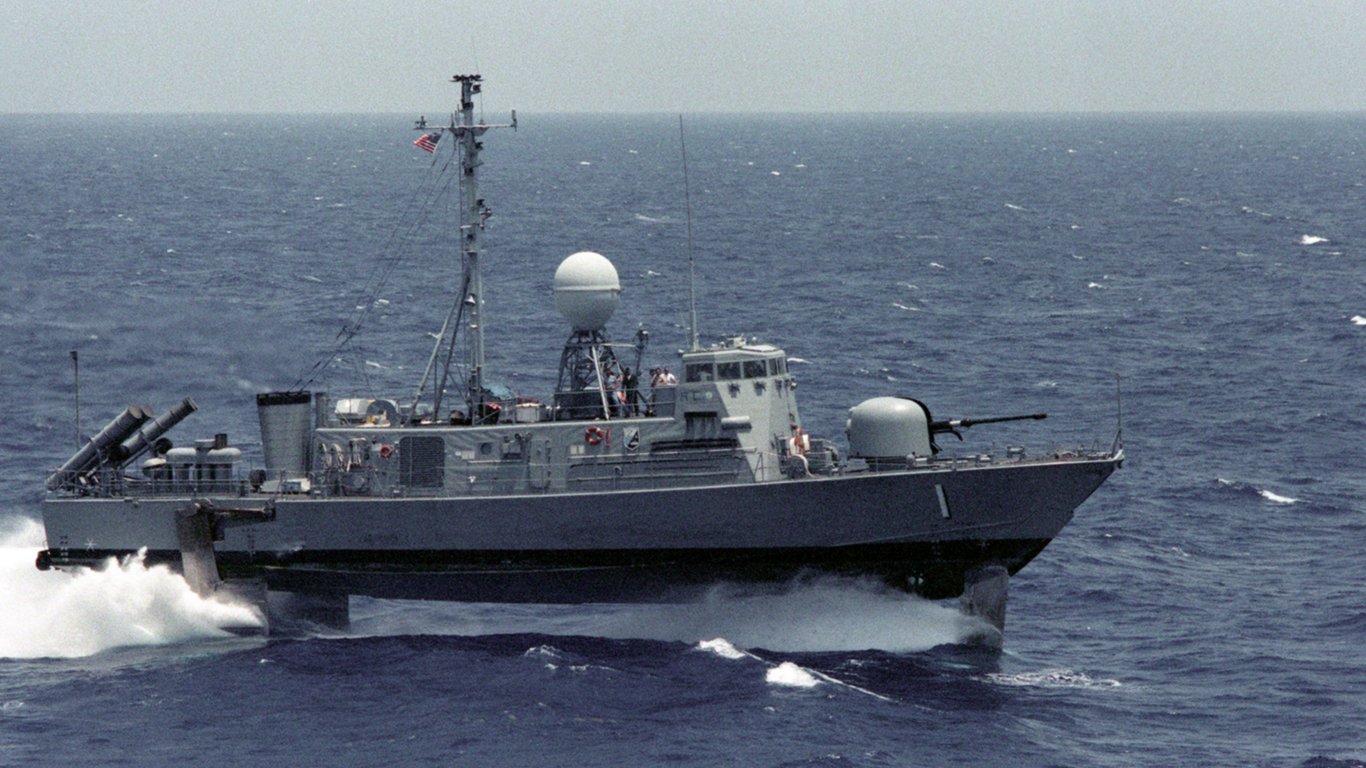
7. Pegasus-class Hydrofoils
> Top speed: 56.93 mph
> Sustained speed: 45.55 mph
> Range: 402 miles
> Status: Retired in 1993
> Country: USA
The Pegasus is both the name of a small fast-attack patrol boat and a series of Pegasus-class U.S. Navy hydrofoils, including the USS Flagstaff. These boats were retired at the end of the Cold War because of their limited combat capabilities.
[in-text-ad-2]
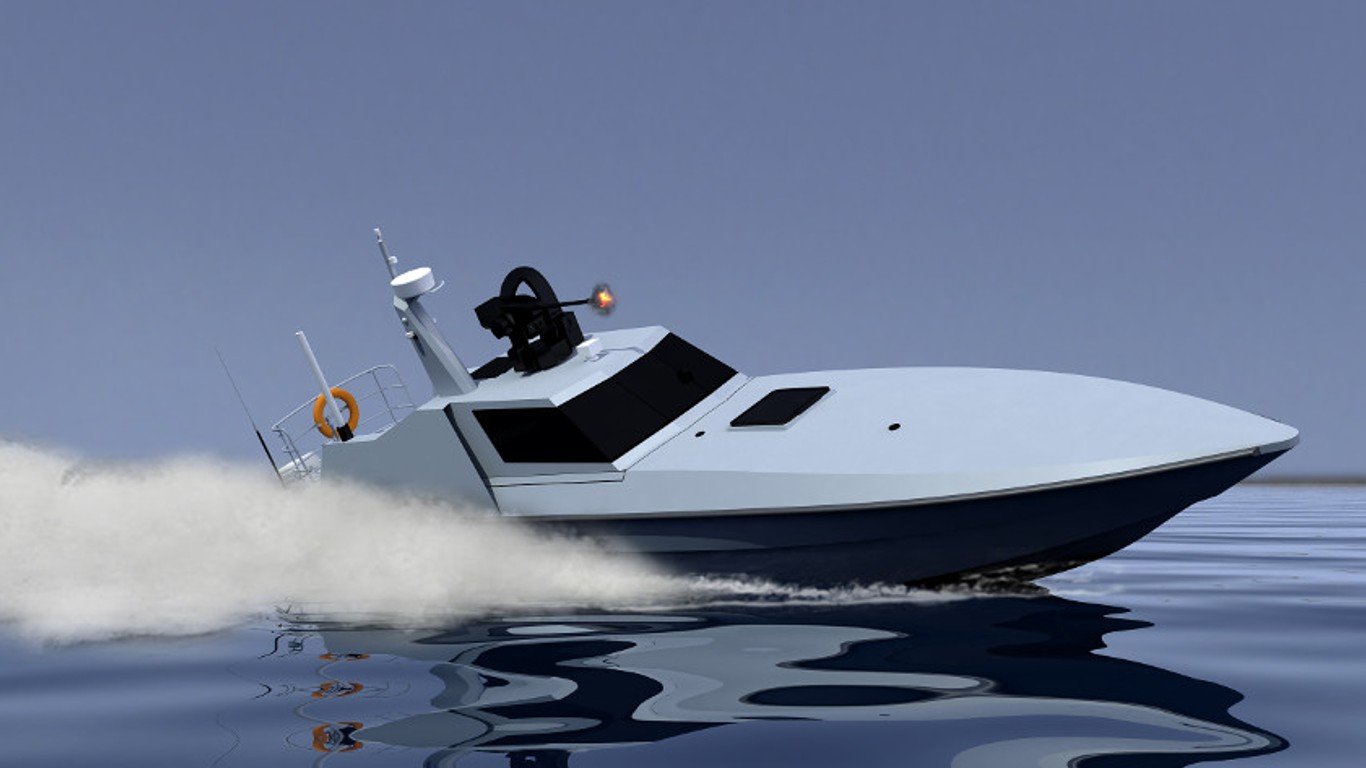
6. Interceptor DV15 RWS
> Top speed: 56.93 mph
> Sustained speed: 45.55 mph
> Range: 402 miles
> Status: In production
> Country: Abu Dhabi
As the name implies, these sea racers are designed to move fast on coastal patrol missions. The DV15, equipped with large machine-gun mounts, is the smaller and faster version of the Interceptor DV33, which is ladened with anti-ship and surface-to-air missiles.
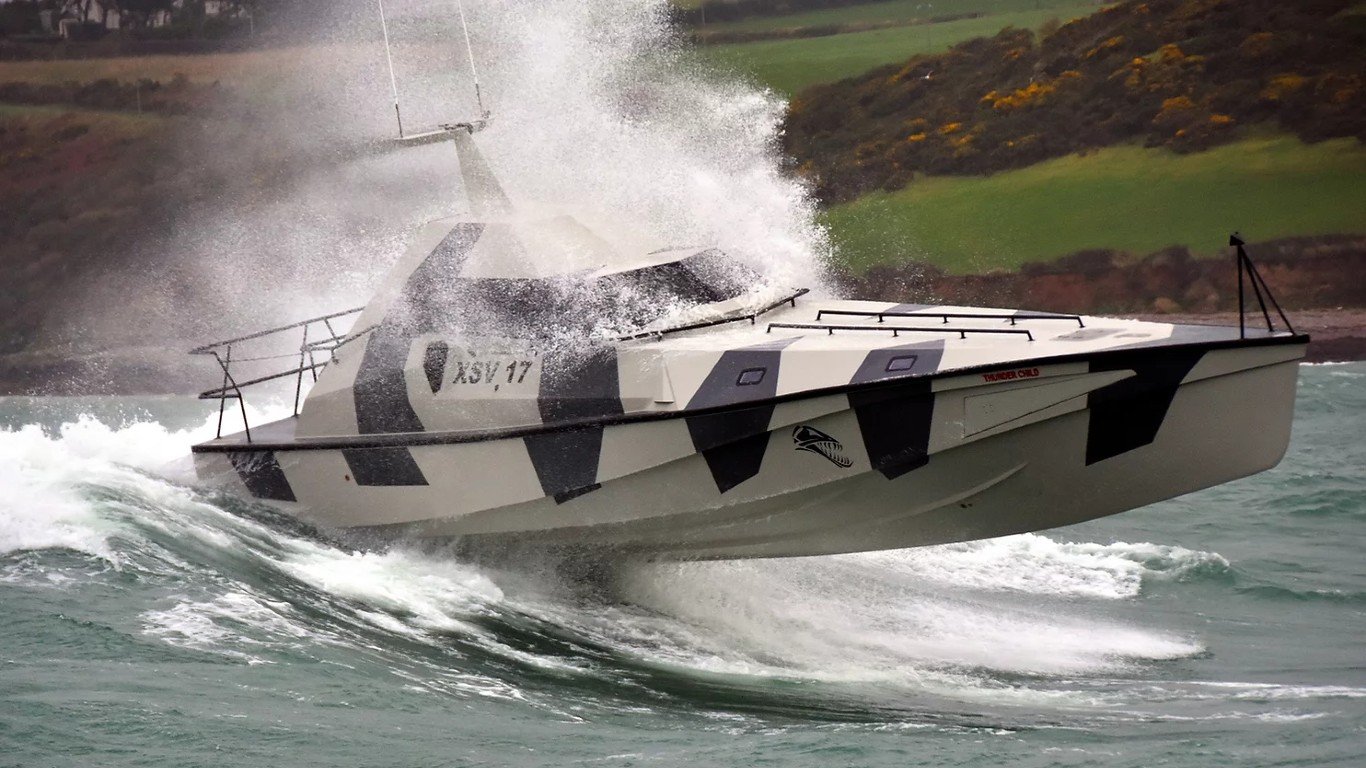
5. Barracuda XSV-17
> Top speed: 68.32 mph
> Sustained speed: 51.24 mph
> Range: 805 miles
> Status: In production
> Country: Ireland
Like the Interceptors, the Barracuda XSV-17 is a wave-piercing racer designed to handle many harsh weather conditions. The ship can be used for military and law enforcement non-engagement applications, like patrol and surveillance, but it’s also sold as a high-speed yacht.
[in-text-ad]
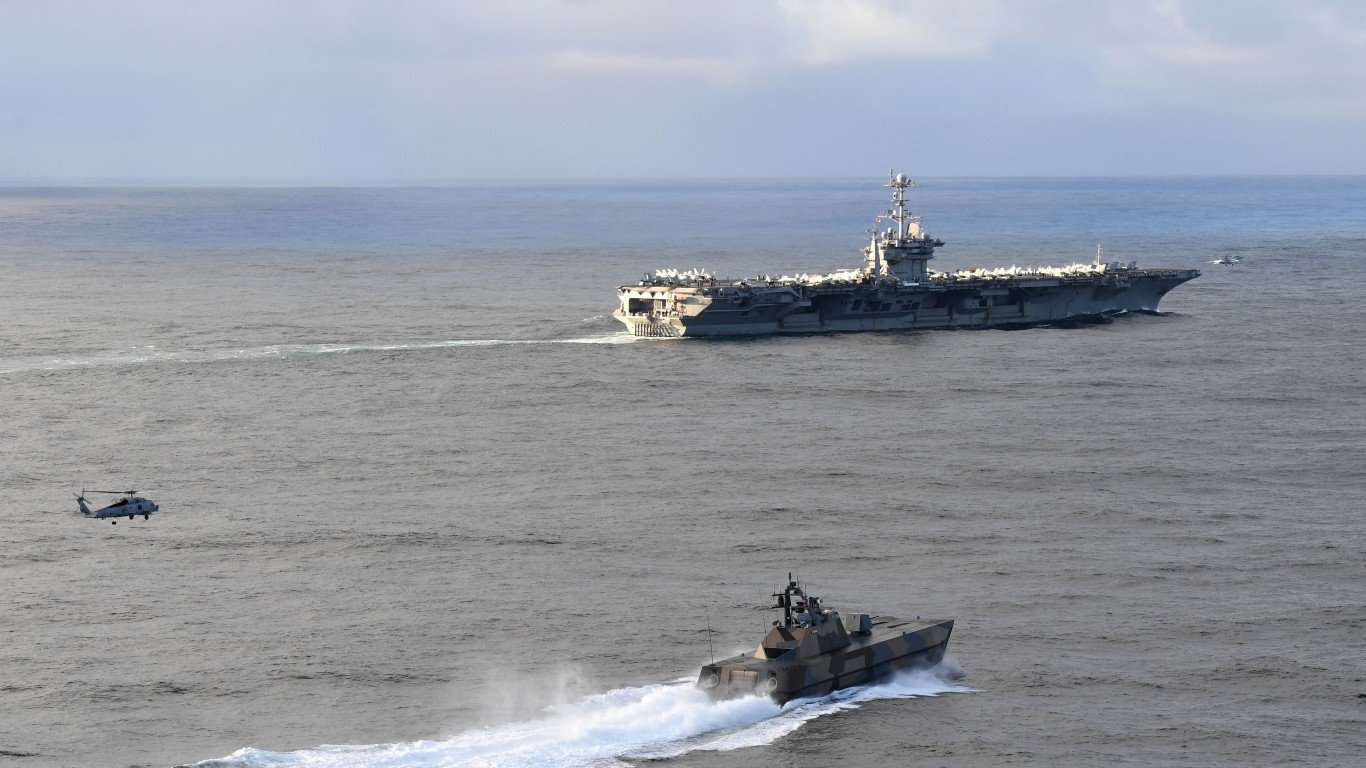
4. Skjold class Corvette
> Top speed: 68.32 mph
> Sustained speed: 45.54 mph
> Range: 920 miles
> Status: In service
> Country: Norway
Skjold is a Norwegian word that means “shield,” and, as the name implies, these stealthy missile-launching shallow-draft ships are designed to patrol Norway’s thousands of miles of coastline populated by many bays, fjords, islands, and skerries.
3. HMCS Bras d’Or
> Top speed: 72 mph
> Sustained speed: 46 mph
> Range: 575.4 miles
> Status: Retired
> Country: Canada
The HMCS Bras d’Or was a fast hydrofoil escort craft based on a ship developed by Alexander Graham Bell and his Canadian partner F.W. Baldwin that shattered a speed record in 1919. The HMCS Bras D’Or hit the waves in 1968, but it never graduated from prototype status as cost overruns led to the project’s demise three years later, according to the Canada Science and Technology Museum.
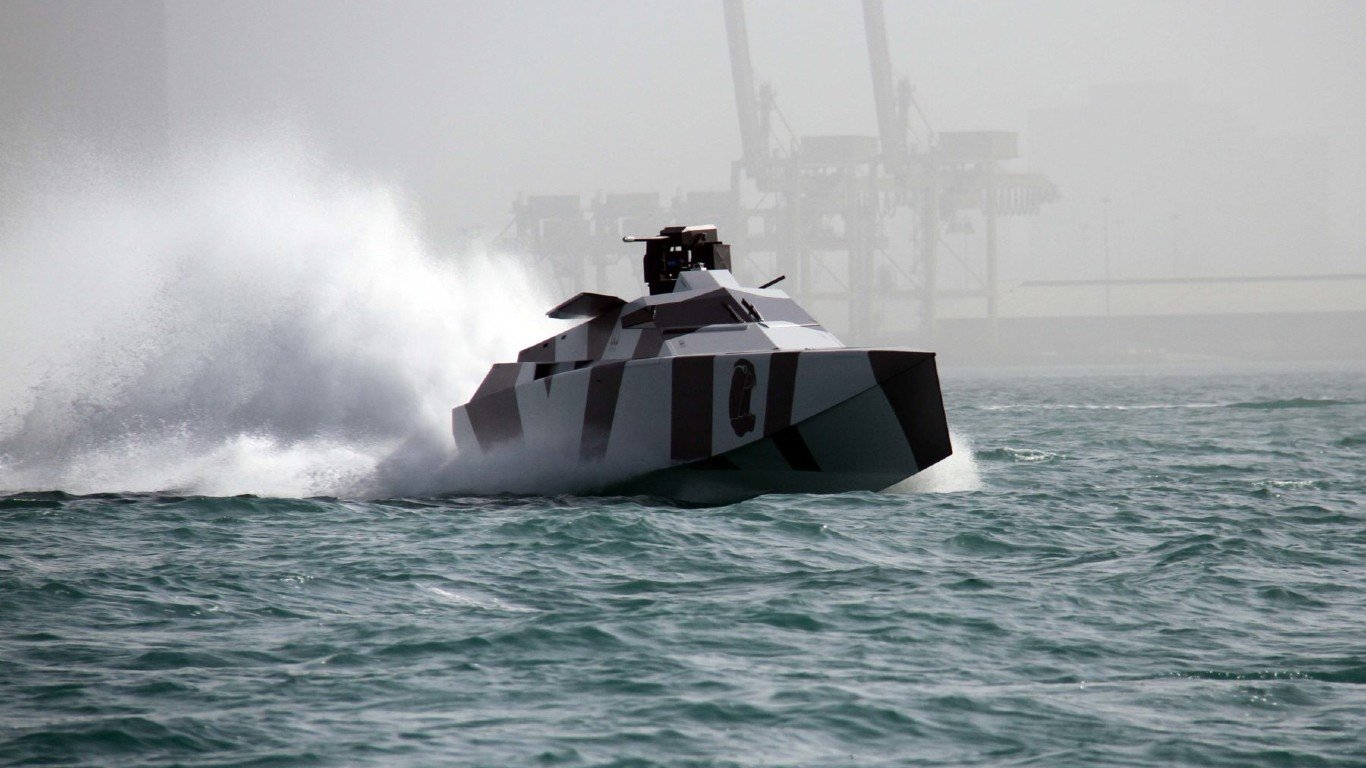
2. Special Forces Interceptor, WP-18
> Top speed: 74 mph
> Sustained speed: 53.51 mph
> Range: 460.31 miles
> Status: In production
> Country: Abu Dhabi
Designed in part to rapidly insert and extract Special Forces without the need for U.S. Navy submarine support, the Interceptor is also an effective high speed watercraft craft for counter-terrorism and anti-smuggling operations.
[in-text-ad-2]
1. A-90 Orlyonok (Ekranoplan)
> Top speed: 248.45+ mph
> Sustained speed: 248.45+ mph
> Range: 1242 miles
> Status: Retired
> Country: USSR
The Soviet-era A-90 was the most plane-like of the ekranoplans that use a phenomenon known as ground effect to hit high speeds just a few feet above the water’s surface. This plane-boat crossbreed, which was in service until the 1990s and could reach altitudes of nearly 10,000 feet (helpful for avoiding collisions with other vessels) was designed to rapidly shuttle Russian troops and supplies across the Caspian and Black seas.
Sponsored: Want to Retire Early? Here’s a Great First Step
Want retirement to come a few years earlier than you’d planned? Or are you ready to retire now, but want an extra set of eyes on your finances?
Now you can speak with up to 3 financial experts in your area for FREE. By simply clicking here you can begin to match with financial professionals who can help you build your plan to retire early. And the best part? The first conversation with them is free.
Click here to match with up to 3 financial pros who would be excited to help you make financial decisions.
Thank you for reading! Have some feedback for us?
Contact the 24/7 Wall St. editorial team.
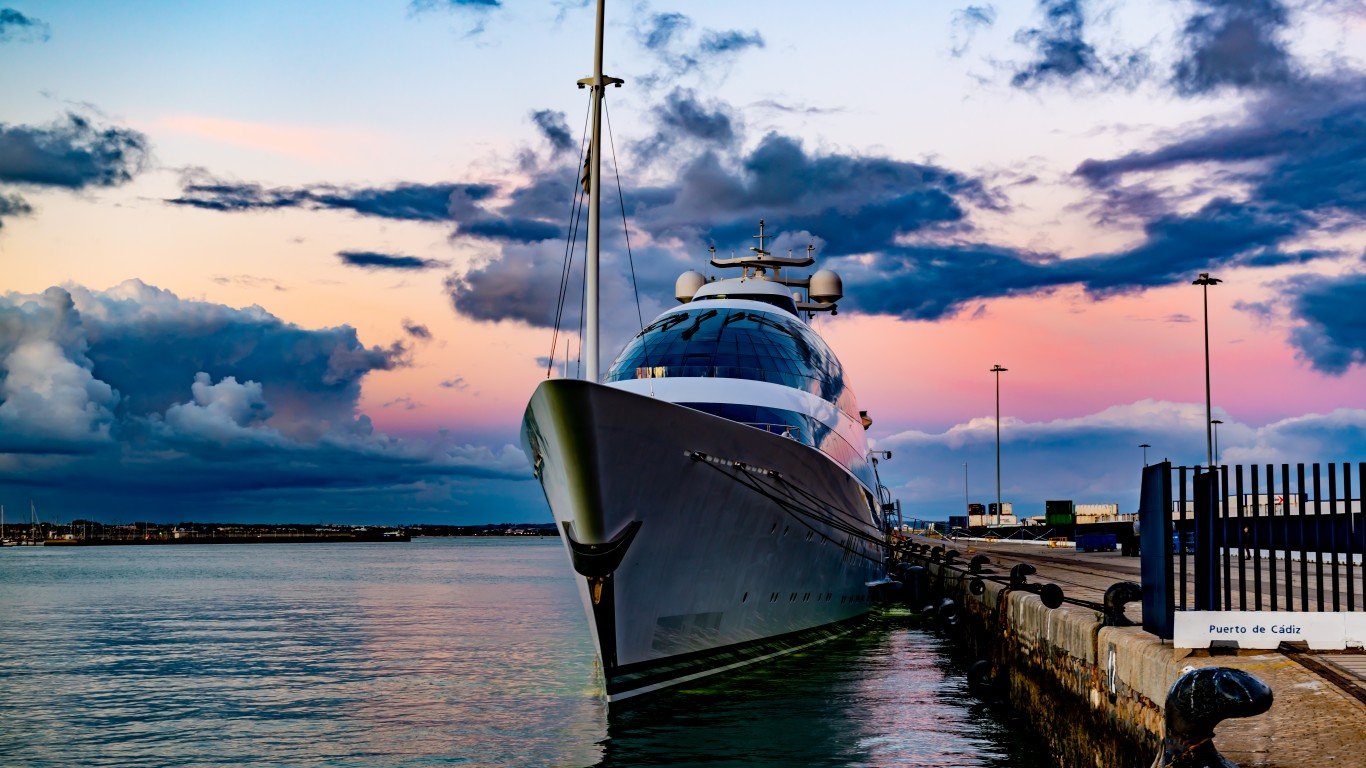 24/7 Wall St.
24/7 Wall St.